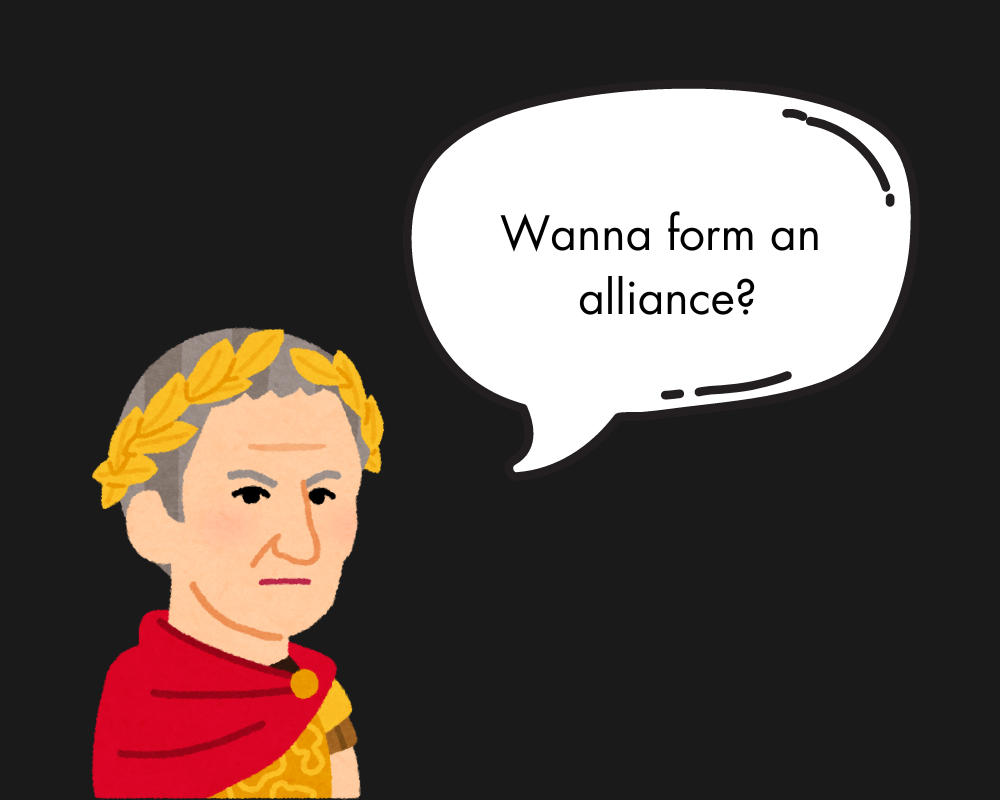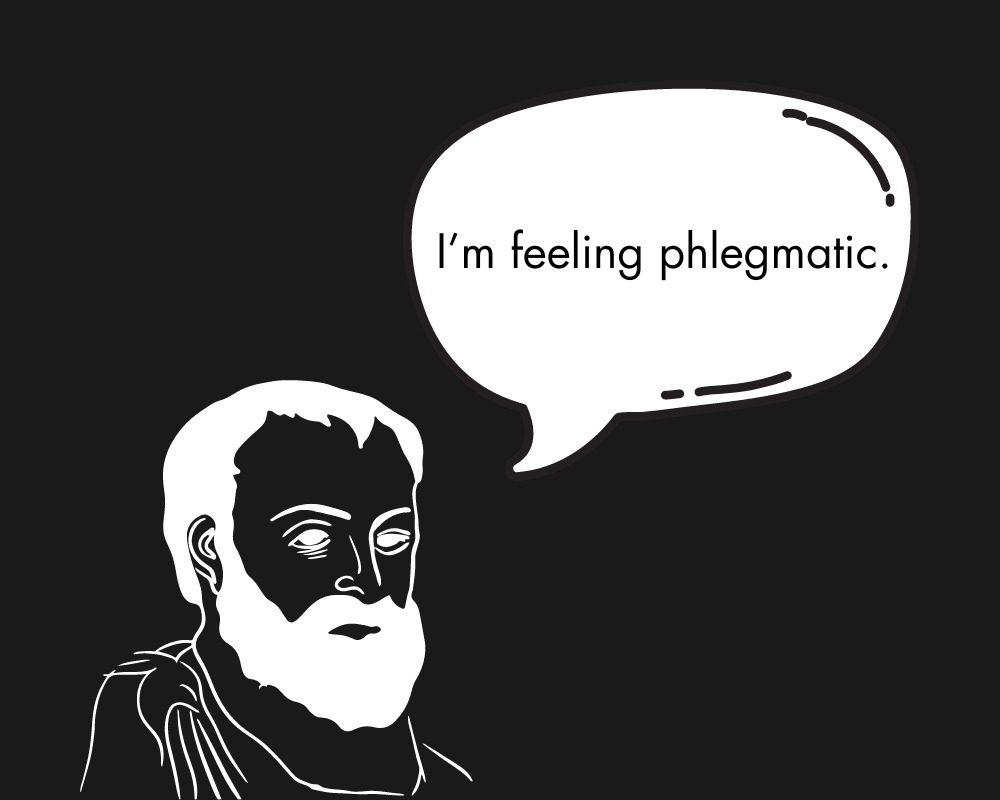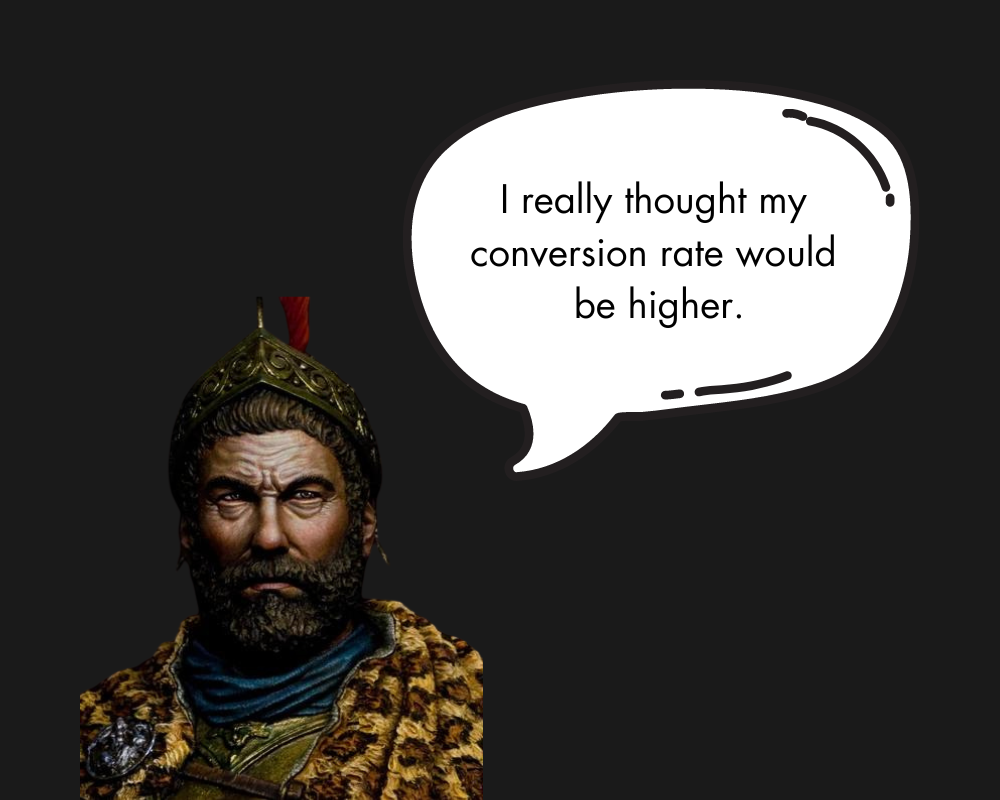“It is probably not love that makes the world go around, but rather those mutually supportive alliances through which partners recognize their dependence on each other for the achievement of shared and private goals.” - Fred Allen
Julius Caesar’s conquest of Gaul, from 58 to 50 BCE, stands as one of the most remarkable military campaigns in history, defining both Caesar’s rise to power and the expansion of Roman territory.
Gaul, a vast region comprising much of modern France, Belgium, and parts of Switzerland and Germany, was a land of fierce, independent tribes, each with its own leaders and ambitions.
By the end of his campaign, Caesar had subjugated nearly all of them, securing immense wealth, glory, and political leverage in Rome.
Caesar’s conquest of Gaul was not a simple matter of military superiority.
His true genius lay in his strategic mastery of alliances - an understanding that raw force, while necessary, is only one part of domination.
To rule a fractured land of fiercely independent tribes, Caesar knew that he would have to be more than a warrior; he would have to be a master manipulator, a diplomat who could twist the very fabric of Gallic politics to serve his ambitions.
The Aedui: Caesar’s First Step into Gaul
Caesar’s alliance with the Aedui was his opening gambit - a crucial move to secure his foothold in Gaul.
The Aedui were a powerful tribe, torn between loyalty to Rome and their own ambitions in a volatile region. Caesar did not approach them with threats; he approached them as an ally, a protector of their interests against the encroaching threat of the Sequani and their Germanic allies under Ariovistus.
He offered Diviciacus, the Aedui’s influential leader, not just Roman support but stability, something the Aedui desperately craved in their shifting world.
But this was not altruism on Caesar’s part.
He knew the power of offering what people most desire and making them believe they are choosing him as their savior.
By gaining the Aedui’s loyalty, Caesar did more than win a tribe - he established himself as a liberator, positioning Rome as the force that would safeguard Gallic freedom, even as he secretly plotted to subjugate the entire region.
The Belgic Wars: Divide and Conquer
When Caesar turned his attention to the Belgae - a confederation of tribes united against Roman expansion - he did not rush in headlong.
He understood the power of division.
Rather than face the Belgae as a unified front, Caesar used diplomacy to fracture their alliances.
He persuaded the Remi, one of the Belgic tribes, to side with him, offering them protection and power in exchange for their loyalty. Caesar was keenly aware that no alliance built on fear or temporary necessity could last - and he used this weakness to exploit tribal rivalries.
By isolating the Remi and others from the larger Belgic confederation, Caesar dismantled the unity of his enemies without ever needing to face them all at once.
His strategy was clear: divide them, weaken them, and then destroy them one by one.
Managing Fragile Loyalties: The Aedui’s Restlessness
Even the most trusted ally can turn into a threat.
Caesar knew this well, as the Aedui - once his staunchest supporters - began to waver. The longer the campaign dragged on, the more they questioned Rome’s true intentions.
Caesar, however, was not blind to the fragility of alliances built on shifting emotions.
He maintained the delicate balance with the Aedui through a mix of calculated rewards and subtle threats. When they began to lean toward rebellion, he reminded them of the benefits Rome provided, all while subtly reinforcing their dependence on his power.
Caesar’s handling of the Aedui is a lesson in alliance management. He knew how to play on their fears, offering just enough reassurance to keep them loyal, while preparing for the moment they might turn against him.
Vercingetorix and the Gallic Revolt: Testing the Limits of Caesar’s Alliances
Caesar’s greatest challenge came in the form of Vercingetorix, a young and charismatic leader of the Arverni who managed to unite the Gallic tribes in revolt.
Vercingetorix was not just a warrior - he was a tactician who understood the same principles Caesar lived by.
He rallied even Caesar’s former allies, playing on their growing resentment toward Roman domination.
The Aedui, once Caesar’s loyal supporters, began to falter under the pressure of this newfound Gallic unity.
Caesar, however, remained a master of the game.
Even as the tide seemed to turn against him, he read the deeper motivations of his allies and enemies.
He understood that many of these alliances, especially those under Vercingetorix’s banner, were built on fear and desperation, not true loyalty.
Caesar exploited these cracks, driving wedges between tribes and offering better terms to those willing to switch sides.
In the final showdown at Alesia, Caesar crushed the Gallic resistance - not because of brute force alone, but because he had outmaneuvered Vercingetorix by playing to the self-interest of those who could be turned.
The Strategic Art of Building True Alliances: Lessons from Caesar in Gaul
Julius Caesar’s conquest of Gaul was not achieved through brute force alone but through the careful weaving of alliances - a subtle mastery of communication and manipulation.
Caesar understood that messaging is not about broadcasting, but about reading the deeper currents of human behavior and motivations.
To conquer, one must first understand the hearts and minds of those they wish to control.
When Caesar entered Gaul, he did not blare his message like a megaphone.
Instead, he presented himself as the protector of Gallic autonomy, knowing that people long for security in turbulent times.
He approached Diviciacus, the leader of the Aedui tribe, not with threats, but with an offer that spoke to the Aedui’s desire for stability.
Diviciacus became one of Caesar’s strongest allies - not because of fear, but because of mutual benefit. Caesar crafted a true alliance, one based on trust and shared interests.
But Caesar’s genius lay in recognizing false alliances.
Many Gallic tribes had allied out of fear, not respect.
Caesar exploited the fragile foundations of these alliances, offering better terms and dividing his enemies.
In war, as in business, alliances built on short-term emotional needs are brittle and easily broken.
True power comes from alliances rooted in mutual respect and self-interest.
A Cautionary Tale: Not a Playbook
The story of Julius Caesar’s conquest of Gaul serves as a powerful reminder that alliances - whether in war, politics, or business - are not all created equal.
Caesar knew that true alliances, based on shared interests and mutual benefit, could withstand pressure, while false alliances, formed out of fear or desperation, would collapse the moment they were tested.
In marketing, we see a similar dynamic.
False alliances are those fragile, transactional relationships between brands and their customers that are built on short-term gains or superficial connections.
These alliances are easily broken because they lack a deeper foundation of trust.
When brands treat customers as mere data points, or when they sacrifice their core values to chase quick wins, they are inadvertently building false alliances - connections that feel strong on the surface but crumble under the weight of competition, shifting market conditions, or customer dissatisfaction.
I am not suggesting that marketers manipulate their customers, but the opposite.
True alliances - those built on authenticity, shared values, and genuine respect for the customer - create far stronger, lasting relationships.
These are alliances in which the brand and customer both benefit.
The customer feels understood, valued, and heard, and in return, they offer loyalty and trust.
This post isn’t about leveraging manipulation tactics; rather, it’s about recognizing when you might be unknowingly building false alliances with your customer base.
The key to long-term success is in transforming these false alliances into true ones by respecting your customer’s autonomy, delivering real value, and aligning your messaging and actions with your brand’s core values.
The Fallacy of Megaphone Messaging
The mistake many marketers make is viewing messaging as a megaphone - blasting out a message with the hope it resonates.
This approach is dangerously simplistic.
True communication, like Caesar’s, is not about speaking louder but about understanding the audience at a deeper level, manipulating unspoken emotions, and crafting messages that strike at the core of their desires.
Effective communication does not change based on audience whims - it is rooted in fundamental truths.
Just as in relationships, the key to messaging lies in the ability to interpret the underlying emotions of your audience.
Misunderstanding this can be fatal in both relationship-building and business-building.
True alliances form when a deeper level of understanding is reached.
In business, as in war, the strongest alliances are not superficial agreements, but bonds built on mutual respect and benefit.
The challenge for marketers is distinguishing between true and false alliances.
True vs. False Alliances in Marketing
Throughout your life, you encounter allies - some true, others false.
In marketing, the same holds.
True alliances are grounded in mutual self-interest and respect for autonomy.
False alliances arise from desperation, when brands sacrifice their identity or values for short-term gain.
This happens frequently in struggling businesses - when profits are low, many brands compromise product quality for higher margins, or reduce their customers to mere data points, treating them as cash flows rather than people with needs.
This erosion of respect for the customer’s autonomy - their intelligence, their decision-making ability - leads to false alliances, and ultimately, the collapse of trust.
The marketer who understands this will be far more strategic, forging true alliances by respecting the customer’s autonomy and elevating their brand through mutual benefit.
How to Transform False Alliances into True Ones
Building a true alliance begins with the quality of the product. Without providing genuine value to the customer, mutual benefit is impossible, and therefore, a true alliance cannot form.
Messaging must be authentic, reflecting the brand’s core values rather than superficial claims designed for quick gains.
- Prioritize Authenticity for Genuine Connection: Just as Caesar offered the Gallic tribes what they truly needed, marketers must align their messaging with their brand’s genuine values. Customers are drawn to authenticity, and trust is the foundation of lasting relationships.
- Look Beyond Surface-Level Interactions: People often present a favorable front, hiding deeper needs. The same is true in customer interactions. Post-purchase surveys and surface-level metrics often fail to capture the true sentiments of your audience. Like Caesar studying his allies and enemies, marketers must delve deeper into customer psychology. Speak directly with your customers - not just the happy ones, but those who hesitate or leave. This will reveal the truth behind their choices.
- Study the Tipping Point of Decision-Making: Every customer is searching for a reason to say "no." What made them say “yes” to your brand? Understanding this key factor is essential to effective messaging. Data points like click-through rates and watch times are useful, but the most valuable insight is why the customer chose to press “Pay Now.” Identify this moment and amplify it in your messaging.
Interpreting the Subtle Signals of Consumer Behavior
Just as an observant general reads the body language of his troops, marketers must interpret the non-verbal cues in consumer behavior. In digital communications, these cues are subtle - time spent on a product page, patterns of engagement, indirect feedback.
For instance, if a customer spends more than 50 seconds on an eCommerce product page, there’s a high probability they are considering a purchase.
The question is: what did your message do to captivate them? What was it about the communication that engaged an attention-deficit audience?
Like Caesar reading the fragile alliances in Gaul, marketers must interpret these signals and adjust their strategies accordingly.
Transparency and Clarity in Communication
In war, transparency can be a weapon, allowing you to build trust and credibility.
Caesar’s open promises to the Gallic tribes about autonomy built trust, while his true intentions remained hidden. Marketers must learn from this, ensuring their communication is clear, honest, and devoid of ambiguity.
A customer who cannot find vital information about your brand will not make a purchase.
Transparency about your product’s strengths - and its limitations - creates credibility.
Hiding behind vague messages leads to distrust and weakens the alliance with your customer.
There are exceptions to this rule, namely in top-of-funnel advertising, where ambiguity becomes your ultimate ally.
It comes down to push-pull.
While ambiguity creates intrigue when you are pushing a message to your audience, lack of clarity can be fatal when a prospect is attempting to pull information.
Divide your messaging into push-pull and act accordingly.
Responsive Feedback Loops and Adaptive Communication
Finally, no alliance can survive without responsiveness.
In Gaul, Caesar’s ability to adapt to changing circumstances made him a formidable foe.
Similarly, marketers must establish strong feedback loops, using customer feedback to refine and adapt their messaging. This is not just about collecting data - it’s about interpreting it with strategic foresight.
For every customer who submits feedback, 26 others feel the same way but remain silent.
Understanding this will allow you to craft more effective messages, improving your alliance with the audience.
The Essence of Strategic Communication: Respect and Mutual Benefit
Communication, in marketing or in life, is an intricate dance of expression, perception, and interpretation.
Like Caesar navigating the complexities of Gaul, marketers must approach their audience with strategic intent, reading beyond surface-level interactions and building alliances based on mutual benefit and respect.
The art of true messaging is not about broadcasting a message louder or more frequently - it’s about understanding the deeper motivations of your customers, crafting authentic communication that resonates with their needs, and respecting their autonomy.
Master this, and you will form alliances that endure.
Fail, and your connections will crumble like the false alliances Caesar so easily dismantled.






